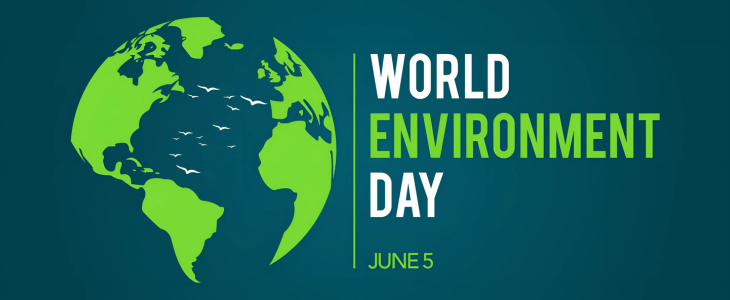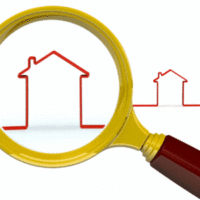
World Environment Day, observed annually on June 5, is a United Nations (UN)-led global event that unites millions of people worldwide to raise awareness and take action for the protection and restoration of the environment. Established in 1972 at the Stockholm Conference on the Human Environment, it serves as the UN’s primary outreach platform to promote environmental causes such as climate change, pollution, wildlife crime and sustainable development.1
The day encourages governments, businesses, communities and individuals to adopt sustainable practices and engage in activities that protect the planet, making it the largest environmental public outreach event worldwide.2
How the Financial Sector Can Help Protect the Planet
Sustainable development is intrinsically linked to the financial services sector because achieving sustainability goals—such as those outlined by the UN’s Sustainable Development Goals—require significant financial resources, innovative investment strategies and responsible risk management. The financial sector acts as a key enabler, channelling capital toward projects and businesses that drive environmental protection, social equity and long-term economic growth.3
Integrate Environmental, Social and Governance (ESG) Criteria: Make investment and lending decisions that account for environmental impacts, such as supporting renewable energy projects, green infrastructure and companies with strong sustainability records.
- Direct capital toward projects and companies that protect biodiversity, restore ecosystems and support the Global Biodiversity Framework targets, such as protecting 30% of the planet by 2030.4
- Develop innovative financial products. Create and promote green bonds, sustainability-linked loans and nature-based investment vehicles that channel funds to critical biodiversity areas, as well as climate solutions.
- Develop ESG and green/brown exposure metrics. ESG analysis is integrated into investment decision-making, with specific metrics for environmental performance. Institutions report the share of their portfolios invested in “green” (environmentally beneficial) versus “brown” (environmentally harmful) sectors, often using ratios or financial exposure metrics.5
Enhanced Due Diligence and Monitoring: By incorporating ESG factors into customer and third-party due diligence, organizations can better detect links to activities like illegal logging, forced labor or corruption. Enhanced monitoring and screening for ESG-related red flags help uncover hidden financial crime risks.
Develop and Implement Credible Climate Plans: Set science-based, enforceable targets for reducing financed greenhouse gas emissions, regularly report progress and phase out investments in high-emitting sectors. This includes aligning with international standards like the Glasgow Financial Alliance for Net Zero and the UN’s Race to Zero.6
Enhance Transparency and Accountability: Disclose climate-related risks and sustainability performance using recognized frameworks (e.g., Task Force on Climate-related Financial Disclosures, International Sustainability Standards Board) and avoid greenwashing by ensuring all environmental claims are credible and verifiable.7
Financed Emissions Accounting
- Financial institutions (FIs) calculate the greenhouse gases emissions associated with their investments and loans, known as financed emissions. These are typically measured in metric tons of CO₂-equivalent (CO₂-e), encompassing direct and indirect emissions from counterparties.
- The Partnership for Carbon Accounting Financials provides globally recognized standards and methodologies for measuring and reporting these emissions, ensuring consistency and comparability across institutions.8
- The use of specialized tools and platforms, like the Climate Assessment for Financial Institutions (CAFI), enable detailed analysis of potential investments, assessing their green eligibility and projected climate impact. CAFI can track reductions in CO₂-e emissions, as well as savings in water and energy, across various asset categories such as renewable energy, energy efficiency and green buildings. These tools often provide dashboards and visualizations to illustrate the real-time environmental impact of entire portfolios.9
Promote Sustainable Operations: Reduce the sector’s own environmental footprint through energy efficiency, waste reduction and sustainable procurement in offices and branches.
Engage in Community and Public Outreach: Support and participate in conservation initiatives, sponsor environmental education and use World Environment Day as a platform to mobilize employees, clients and the public for environmental action.
Regulatory Compliance and Reputation Protection: As global regulations increasingly mandate ESG disclosures and transparency (e.g., EU’s Corporate Sustainability Reporting Directive, FATF Recommendations), aligning anti-financial crime (AFC) strategies with ESG principles helps organizations stay compliant, avoid penalties and protect their reputations.10
Improved Policies, Training and Culture: Updating policies to include ESG risks, training staff on ESG-related financial crime and fostering a culture of ethical conduct all contribute to more resilient and proactive AFC programs.
Leveraging Technology and Data: Integrating ESG data into risk scoring, transaction monitoring and sanctions screening—using advanced analytics and artificial intelligence—enables earlier detection of suspicious activity linked to ESG risks.
Challenges and Opportunities
While the financial sector has made progress in integrating sustainability, challenges remain, such as mainstreaming sustainable finance principles and ensuring that sustainable products do not remain niche offerings.
There is growing demand from investors and stakeholders for the sector to accelerate the transition to a sustainable economy, presenting significant opportunities for innovation, growth and leadership in global sustainability efforts.
By embedding sustainability into their core activities and leveraging their influence, FIs can help drive systemic change, protect the planet and make World Environment Day a truly global force for environmental action, while positioning themselves as responsible, sustainable market leaders.
Jinisha Bhatt, CAMS, founder, Canada Anti-Human Trafficking Consortium, independent compliance consultant, connect@fighthumantrafficking.ca, ![]()
- “United Nations Conference on the Human Environment, 5-16 June 1972, Stockholm,” United Nations, https://www.un.org/en/conferences/environment/stockholm1972#:~:text=One%20of%20the%20major%20results,Nations%20Environment%20Programme%20(UNEP).
- “UN Day World Environment Day 2025,” UN Environment Programme, https://www.unep.org/events/un-day/world-environment-day-2025
- “The 17 Goals,” United Nations, https://sdgs.un.org/goals
- “Tackling the Triple Planetary Crisis: The Role of the Finance Sector,” Building Bridges, June 5, 2022, https://www.buildingbridges.org/tackling-the-triple-planetary-crisis-the-role-of-the-finance-sector/
- Philip Fliegel, “How you measure transition risk matters: Comparing and evaluating climate transition risk metrics,” Sustainable Finance Alliance, January 31, 2024, https://sustainablefinancealliance.org/wp-content/uploads/2024/08/GRASFI_2024_paper_111.pdf
- “Net-zero banking: Creating a long-term and sustainable financial services economy,” PwC, https://www.pwc.in/blogs/net-zero-banking-creating-a-long-term-and-sustainable-financial-services-economy.html
- Sean Cleary, “What Is Sustainable Finance?” Institute for Sustainable Finance, https://smith.queensu.ca/centres/isf/resources/primer-series/sustainable-finance.php
- “The Guide to the Partnership for Carbon Accounting Financials (PCAF),” Arbor, April 11, 2025, https://www.arbor.eco/blog/the-guide-to-the-partnership-for-carbon-accounting-financials-pcaf
- “Climate Assessment for Financial Institutions,” International Finance Corporation, World Bank Group, https://www.ifc.org/en/what-we-do/sector-expertise/financial-institutions/climate-finance/climate-assessment-for-financial-institutions
- “Corporate Sustainability Reporting Directive (CSRD), explained,” Normative, May 23, 2025, https://normative.io/insight/csrd-explained/










